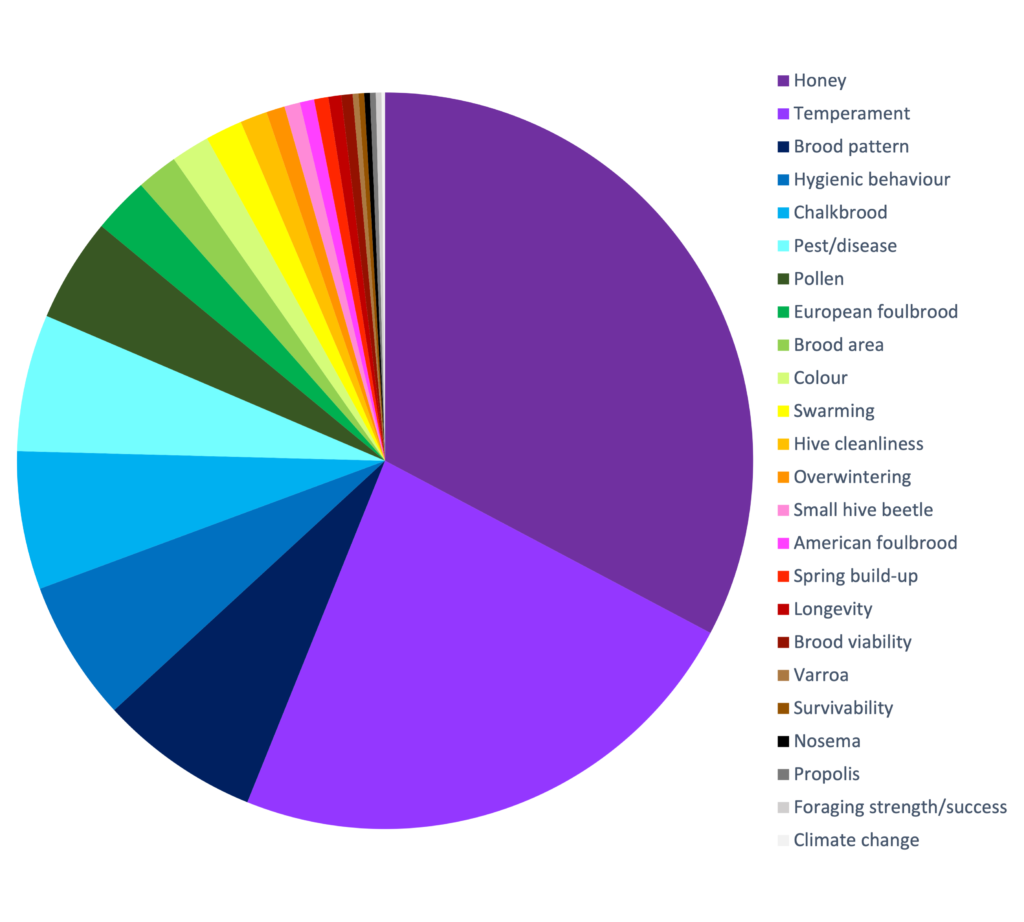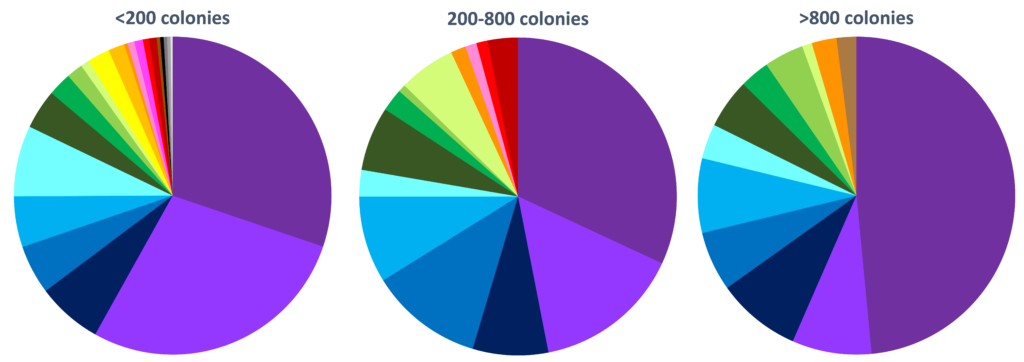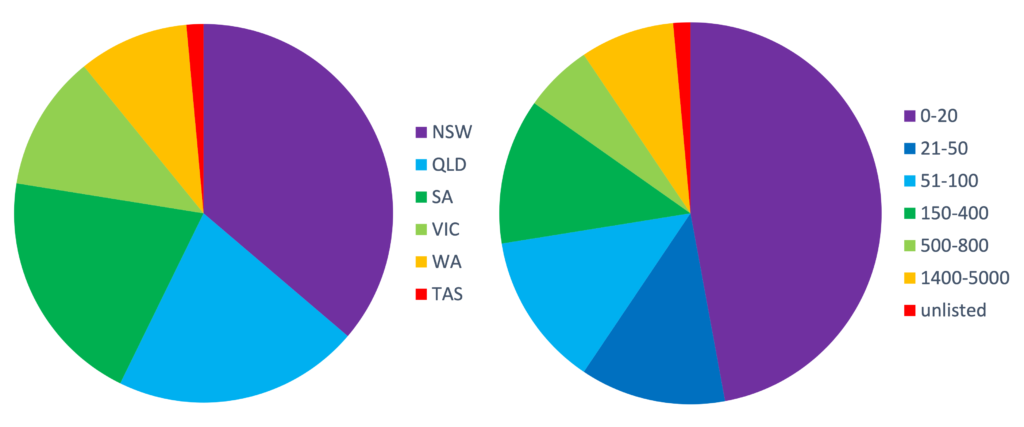Plan Bee, Australia’s national honey bee genetic improvement program conducts an annual survey of beekeepers and breeders to determine attitudes and opinions surrounding honey bee genetics.
This annual survey is a crucial activity as it helps guide Plan Bee, ensuring that the needs of the industry are well understood, and that the future direction of the project is aligned to the future of the industry.
In 2022 82 beekeepers gave ‘weights’ to their breeding objectives. For example, they allocated 60% to honey production and 40% to temperament. Honey production (33%) and temperament (23%), were the most sought after traits, just as they were in 2021 (Figure 1). However, since 2021, the weighting of these two traits has increased even further. The next most desired trait was pest and disease resistance (a sum of individual traits relating to hygienic behaviour, chalkbrood, pest/disease, European foulbrood, small hive beetle, American foulbrood, Varroa, Nosema), this totalled 16% of the score. As for past surveys different sectors of the beekeeping community placed different weight on different traits (Figure 2).

Figure 1. Importance of traits to beekeepers in 2022. The scores given to each trait were summed and then divided by the total.

Figure 2. Importance of traits to different sectors of the beekeeping community in 2022
138 beekeepers listed between 1 and 12 traits in their breeding objective – including those that did and did not include weights for the traits. The most frequently mentioned traits were temperament (81%) and honey (79%; Table 1). 70% of beekeepers mentioned at least one pest/disease or hygienic behaviour. The next most important traits were brood pattern (42%), chalkbrood (32%) and hygienic behaviour (25%).
Table 1. Percent of beekeepers listing each trait in their breeding objective

The survey tells us that Australian beekeepers have a strong focus on honey production. It also reminds us of the importance of bees with a good temperament, particularly amongst small and recreational beekeepers (<200 hives; Figure 2), which represented 73% of the survey (Figure 3). Beekeepers also recognise the importance of pest and disease resistance and a queen with a good laying pattern to management of their colonies.
With a solid understanding of what beekeepers want from their bees, breeders can adapt their breeding strategies accordingly. In turn, this will boost the overall productivity and profitability of the honey bee industry.
The state with the most responses was NSW (36%). Almost half (47%) of the beekeepers that responded had 20 or fewer colonies (Figure 2).

Figure 3. Left: Percent/proportion of respondents from each state, Right: Number of colonies owned by respondents as a percent/proportion
Acknowledgements:
- Past Plan Bee survey results: 2020, 2021
- This article was peer-reviewed by Erica Mo and Emily Noordyke.


